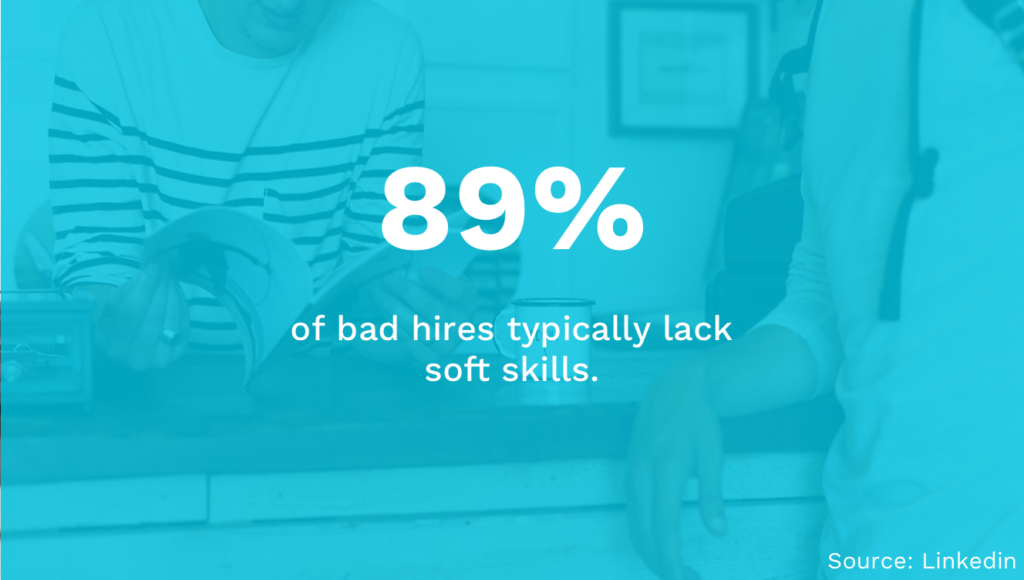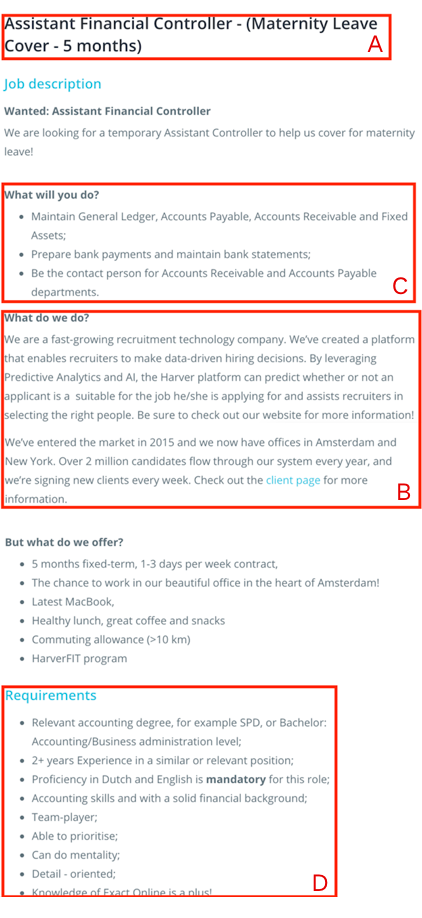Hiring temporary workers is certainly not a new phenomenon. Most industries require short-term employees in one capacity or another – for holiday seasons, meeting short-term workloads or project-based work, for example.
With the current booming of gig economy and the rise of contingent workforce, having an effective recruitment process to hire temporary workers is becoming increasingly important.
While temporary workers may not be with your company for too long, you still need them to perform well. To ensure this, it is vital that you hire the right people for a particular position. Unfortunately, this isn’t as easy as many managers imagine. As a result, they end up hiring individuals that aren’t suitable for their position, which leads to underperformance or even premature turnover.
Making good hiring decisions is, therefore, crucial. To guarantee a smoother process in the future, these are guidelines you can follow to help you hire start temporary workers.
What’s in?
- Be aware of the actual job requirements
- Understand what you need to be looking for
- Write an impeccable job description
- Consider overall fit with the company
- Do thorough checks
- Consider a more in-depth interview process
Like what you see?
Don’t miss out. Subscribe to our quarterly digest to get the latest TA and TM resources delivered right to your inbox.
1. Be aware of the actual job requirements
Most people – even hiring managers – tend to think of positions in terms of skills and abilities. Now, there is no denying that any employee needs the right skills and experience to be successful at their job. Nevertheless, these aren’t the only elements that they must have to thrive in a particular position.
After all, there are certain jobs that require additional personal characteristics. For instance, if you are hiring for a sales position, it is imperative that your candidates also have the right personality for the job. They will need to be outgoing, sociable, and able to interact well with different kinds of people. As you can imagine, such characteristics can’t be easily learned in a classroom.
However, simply reminding yourself that you will have to look out for these traits will go a long way in helping you hire the right individuals. Once you have collected a pool of skilled individuals, you can then consider how well they will fit the position in other ways as well.
Lacking soft skills is one of the most frequent problems employers face with new hires. Understanding what soft skills you require is the start of hiring the right people.
2. Understand what you need to be looking for
In many ways, a temporary worker needs to be even more capable than a long-term employee. Why? Well, a seasonal worker needs to already have the skills, personality traits, and other elements that a particular position demands. This is because there isn’t nearly enough time for you to train or guide them the way you would do with a permanent employee.
So, one of the more important steps to hiring the right worker is to first have a good idea of what you are looking for. To start with, a great temporary worker needs to be independent and adaptable. In addition to learning the ropes of their specific position, they also need to quickly pick up on how the company works.
It is only with these competencies that the candidates will be able to dive into their work immediately. Otherwise, they will waste a considerable amount of time, trying to fit in and figure out the system. By the time that they do sort themselves out, it may be too late.
So, look for individuals that can think on their feet, are able to communicate well, and are confident in their abilities. At the same time, these employees must be willing to be trained as each position changes from one organization to the next.
3. Write an impeccable job description
Once you are more aware of the specifics of a certain position, it is time to write a placement advertisement. Far too many employers don’t pay enough attention when writing such calls to action for temporary positions. As a result, they end up attracting people who aren’t right for the position. In turn, their pool of candidates isn’t as suitable as it can be.
All of this can be changed with the help of a well-written job description. This will let potential temporary employees exactly what you are looking for. Here are the top elements to include:
A. Job title
To start with, make sure to use a job title that everyone can understand. Even if your company uses a different label for a position, don’t use that when recruiting. Instead, stick with something that your average candidate can understand easily. You can then avoid any confusion with the people enrolling for the position. Not to mention that they will have a clearer idea of what is expected of them.
B. Company information
Unless you are an incredibly well-known company, it is unlikely that too many people will be aware of what it is that you do. This is why it is a good idea to provide a brief but clear summary of what your organization does. By providing some insight, you will make it easier for individuals to determine whether or not it is a good fit for them.
C. Detailed description of duties
List out the responsibilities that will accompany the position. Try to give candidates a good idea of what is expected of them on a day-to-day basis. Once again, providing all this information increases the chances of the right people applying for the job. Your candidates will be able to carefully consider all of the mentioned duties and determine whether such a position is suitable for them or not.
D. Extensive explanation of requirements
Once you’ve identified what kind of traits and skills you need for a particular position, you should make full use of this knowledge and carefully list down all of the requirements you have for your candidates. As mentioned, you will need to include actual skills as well as any other traits that the position may require. Don’t forget to mention availability requirements!
This is an example of a temporary job description. Availability is stated up front and the posting also contains other necessary elements: company information, job responsibilities and requirements.
4. Consider overall fit with the company
Another thing that hiring managers fail to check for with temporary workers is organizational, or culture fit. This is because, in most instances, culture fit is associated with employee retention. Thus, most recruiters imagine that this isn’t something that they need to check with for seasonal workers. After all, the whole purpose behind such a position is short-term placement.
What most people forget, though, is that cultural fit isn’t just about ensuring that your employees stick around. It is also about making certain that your employees work well within the current system and within the team in place. This means that they have the type of values and work ethic that will be suitable for your work environment.
Now, you may not expect a temporary worker to remain with the organization for too long. Nevertheless, you do need them to perform well within the existing structure. Due to this, it is important to be sure that anyone that you are hiring has the capacity to do so.
Stop guessing,
Start data-driven hiring.
Learn how you implement a modern candidate selection process, that is: streamlined, experience-driven and backed by data.

5. Do thorough checks
Another mistake that many recruiters make with hiring temporary workers is that they don’t run enough checks. They imagine that just because the position is temporary, they don’t need to go too much trouble to verify the claims of their candidates. Well, this is not an effective process at all.
It doesn’t matter how long you need an employee to remain within the company, you still need to run some type of background check on them. The first step, of course, is to verify that the credentials, accreditations, and similar claims all check out. This way, you can be convinced that the individual is actually qualified for the position.
However, the investigation shouldn’t end there. If you are fairly certain that you would like to hire a particular individual, you will also need to find out more information. This can include details about their previous employment and how well they worked in the last organization.
At the same time, you may want to discover if the person that you wish to hire has any criminal background or has been implicated in any crimes. While this may seem like quite a bit of work on your part, it is now easier than ever before. There are plenty of websites that will allow you to check up on potential employees without any hassle.
Job applicants often fib on their resumes. That’s why doing a background check and a reference check should be an integral part of your hiring process for not only regular, but also temporary workers.
6. Consider a more in-depth interview process
Another thing that you should improve on is the actual interview process. As with many other aspects of hiring temporary workers, many employers don’t spend too much time interviewing candidates. In fact, many managers will simply have a single meeting with potential workers before deciding whether or not to hire someone.
This isn’t nearly enough time to determine whether someone is a good fit for a particular position. After all, everyone can make a good impression on you if you spend a minimum amount of time with them. For the best results, you may want to consider a two-step interview process.
Once you have gone through the initial screening, you will be able to narrow down the pool of candidates based on your key requirements. After you have done this, you could request either a phone or video interview. This will allow you to get the basic information out of the way and make sure that a particular candidate really does have the skills and capabilities that you need.
If you are satisfied with their performance here, then schedule a face-to-face interview. Such meetings will let you get a better feel for the candidate. Not to mention, since you focused on their hard skills in the initial interview, you can then spend your time identifying whether or not they have the soft skills that you require.
Interview Questions
Now, in the second interview, be a bit more mindful of the questions you ask the candidates. Here, you will need to strike the right balance. On the one hand, your questions need to pertain to the temporary nature of the hiring position. At the same time, the individual will also need to display skills and capabilities that are required of a long-term employee as well.
Here are some of the questions to make a point of asking during the interview:
- “Why are you looking for a temporary position?”
- “Describe a career situation that you had to adapt to. What skills did you rely on to manage this?”
- “How can you stay motivated when working in a temporary position?”
- “Provide an example of a time that you had to show initiative at work.”
Remember to always keep the questions open-ended. Every query that you make should be designed to get the candidate talking about themselves, especially in a professional capacity. The more details you have to work with, the easier it will be for you to make a more informed decision.
If you do have a rather specialized position, you may want to include personality, cognitive ability, and other types of assessments. These should be handed out after the first interview. If the individual proves themselves to be capable, you can then decide whether or not to have a physical interview with them.
Having an agile workforce is becoming a reality for companies all over the world. Having a well-thought hiring process for temporary workers makes the transition smoother.
A final word
As you can see, the hiring process for temporary workers is just as complex as that of permanent employees. Nevertheless, it is imperative that you make every effort to not rush your hiring process for temporary employees and make it as effective as possible. While it may seem to make things more complicated for you, it will end up paying off in the long run.
| About the Author: Eric Lawton has been a part of the Human Resources sector for most of his career. During this period, he has learnt how to create and tweak hiring strategies to choose specific industries and companies. These days, he prefers to share his experience and knowledge with other people in the business. |
Stop guessing,
Start data-driven hiring.
Learn how you implement a modern candidate selection process, that is: streamlined, experience-driven and backed by data.







